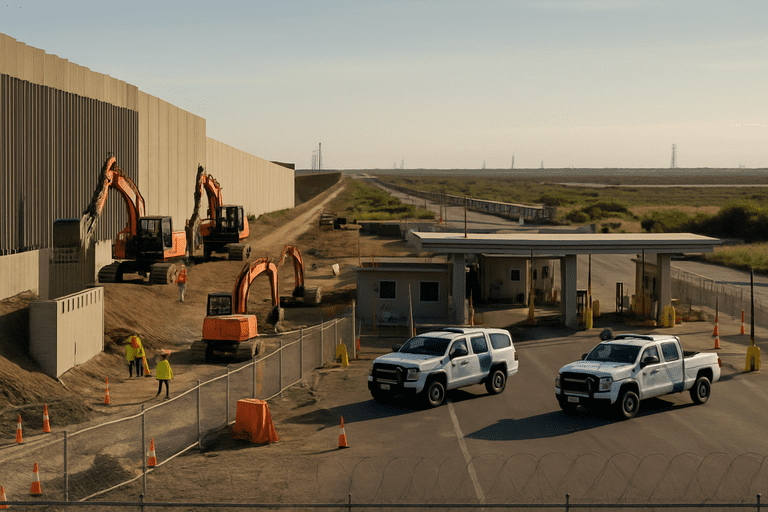🎧 Listen to the summary:
Renewing construction of the border wall, declaring a national emergency, and increasing troop deployments together form a forceful, concrete plan intended to reduce unauthorized crossings and the trafficking of illicit drugs at the southern border. This package moves federal attention, money and manpower toward a single, measurable aim: harder, more controlled access at ports and along the line.
The centerpiece of the policy is a revived wall program paired with a renewed national emergency and large new appropriations for enforcement. The administration has directed agencies to resume wall construction and secured legislation allocating roughly $170 billion for border and immigration enforcement, including more than $46 billion earmarked for wall construction and related projects. To bolster capacity on the ground, the Pentagon and Department of Homeland Security have expanded deployments of National Guard and active-duty troops and designated several stretches of the boundary as federally controlled National Defense Areas, while armored vehicles and other military assets have been sent to support operations.
Implementation relies on a layered mix of contractors, Customs and Border Protection personnel, and military support. CBP inspects people and cargo at 328 official ports of entry and manages a workforce of more than sixty thousand employees, about one-third of whom are Border Patrol agents who work between ports. Those port operations and inspection regimes are being reinforced even as forces between ports are increased.
Documented trade-offs and frictions are already evident in reporting. Courts have blocked or limited past attempts to narrow asylum access and to revive the “Remain in Mexico” program, creating legal uncertainty for operational plans. The use of active-duty troops and the creation of National Defense Areas raise questions about statutory limits such as the Posse Comitatus Act and about the practical boundary between military support and law enforcement functions. The policy also inherits the inefficiency that long waits at ports of entry tend to push asylum seekers toward unauthorized crossings, which in turn strains Border Patrol resources. fileciteturn0file12turn0file3
Communities at ports of entry, migrants seeking asylum, CBP staff, and neighboring countries are directly affected, as are federal budgets and interagency workflows. Unintended consequences may include greater military logistics overhead, slower adjudication at ports, and more litigation.
Next steps include continued construction and deployments, ongoing court challenges to specific measures, and routine congressional and judicial oversight of emergency authorities and enforcement funding, with statutory limits such as Posse Comitatus remaining a formal guardrail.
—
Lisa Grant reports on immigration enforcement, border operations, and national security protocols. She studied political science at Arizona State University and previously worked as a legislative staffer on immigration reform. Her reporting brings a field-level understanding of border policy and how it is applied in communities across the Southwest.



